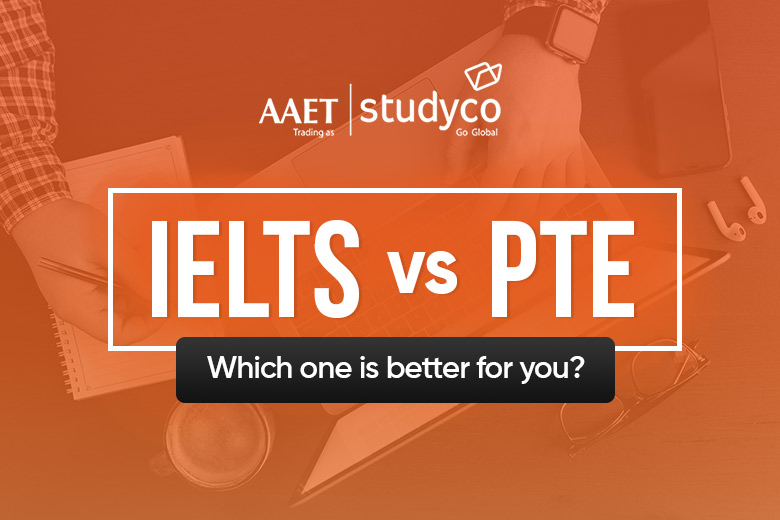Health Insurance for International Students in Australia

Confused about health insurance in Australia for international students? This guide explains Overseas Student Health Cover (OSHC), costs, top providers & how to choose the best plan for you. Contact Studyco counsellors for more info!
How to write a Statement of Purpose(SOP)

Struggling with your Statement of Purpose for study abroad? Our comprehensive guide will help you craft a compelling SOP that highlights your academic goals and personal motivations. Learn how to showcase your unique story and increase your chances of admission to your dream university with StudyCo.
Difference Between Health Science and Nursing in Australia

Discover the key difference between health science and nursing in Australia. Learn about career paths, requirements, and more in both fields.
Part Time Jobs for International Students Abroad

Discover best part time jobs for international students abroad! Learn how to find work that fits your visa, schedule and interests with StudyCo.
Can You Buy A Car In Australia As An International Student?

Can international students buy a car in Australia? This comprehensive guide walks you through the process, from checking eligibility and setting a budget to finding the right car, handling paperwork, and securing car loans.
Student Visa in Australia: Genuine Student Test (GST)

Discover tips to navigate the Genuine Student Test (GST) in ensuring your student visa application is successful.
Can you work on a student visa in Australia?

Want to work and study in Australia on a student visa? Discover the latest rules, opportunities, and tips for international students.
IELTS VS PTE. Which one is better for you?

Choosing the Best English Language Proficiency Exam: IELTS vs PTE Are you looking to prove your English language proficiency? With so many options available, it can be challenging to choose the best exam for your needs. Two of the most popular English language proficiency exams are IELTS (International English Language Testing System) and PTE (Pearson Test of English). In this article, we will compare these two exams, examining their similarities and differences to help you make an informed decision. IELTS, jointly owned by the British Council, IDP: IELTS and Cambridge University Press and Assessment, is accepted by universities, employers, and immigration authorities worldwide. On the other hand, PTE, developed by Pearson, is a computer-based exam that assesses your reading, writing, listening, and speaking skills. Both exams have their unique features, including test formats, scoring methods, and test locations. Understanding these differences is essential to choose the exam that suits your requirements and goals. Whether your aim is to study abroad, work in an English-speaking country, or immigrate, selecting the right English language proficiency exam is crucial. So let’s dive into the details and compare IELTS and PTE to find the best fit for you. IELTS: International English Language Testing System IELTS, or the International English Language Testing System, is one of the most widely recognized and accepted English language proficiency exams globally. Developed by the British Council, IDP: IELTS, and Cambridge University Press and Assessment,, IELTS has become a standard requirement for those seeking to study, work, or immigrate to countries where English is the primary language. The IELTS exam is designed to assess an individual’s ability to communicate effectively in English across four key areas: listening, reading, writing, and speaking. The exam is available in two formats: Academic and General Training. The Academic version is typically required for those seeking admission to universities or colleges, while the General Training version is more suitable for those looking to to train or study at below degree level, immigrate or work in an English-speaking country. Both the Academic and General Training versions of the IELTS exam follow the same overall structure, with each section testing a specific language skill. The listening and speaking sections are the same for both versions, while the reading and writing sections differ in their content and focus. The IELTS exam is administered by trained and certified examiners, ensuring a fair and consistent assessment of each candidate’s abilities. PTE: Pearson Test of English The Pearson Test of English (PTE) is another widely recognized English language proficiency exam, developed and administered by the global education company, Pearson. Unlike IELTS, which is a paper-based exam, the PTE is a computer-based assessment that evaluates an individual’s English language skills across the same four key areas: listening, reading, writing, and speaking. The PTE exam is designed to provide a more efficient and streamlined testing experience, with the entire assessment being completed in a single session, typically lasting approximately 2 hours. The exam is available in two formats: Academic and General, similar to IELTS, with the Academic version being the more commonly required option for those seeking to study or work in an English-speaking environment. Like IELTS, the PTE exam assesses a candidate’s ability to comprehend and communicate effectively in English. However, the test format and structure differ from IELTS, with the PTE utilizing a range of question types in each section. Format and structure of IELTS The IELTS exam consists of four sections, each testing a specific language skill: Listening: This section evaluates the candidate’s ability to understand spoken English in a variety of contexts, including conversations, short answer questions, sentence completion, monologues, etc. The listening section lasts for approximately 30 minutes and includes 40 questions. Reading: The reading section assesses the candidate’s ability to comprehend written English. The content of the Reading test is different for IELTS Academic and IELTS General Training tests. The Academic version includes three long texts, while the General Training version includes shorter passages. The reading section lasts for 60 minutes and includes 40 questions for both. Writing: This section evaluates the candidate’s ability to communicate effectively in written English. The Academic version includes two tasks: a 150-word essay and a 250-word essay. The General Training version includes a letter-writing task and an essay. The writing section lasts for 60 minutes. Speaking: The speaking section assesses the candidate’s ability to communicate orally in English. The content of the IELTS Speaking test is the same for both the IELTS Academic and IELTS General Training tests.This section is conducted in a face-to-face interview with an IELTS examiner and includes three parts: an introduction and interview, a longer turn, and a discussion. The speaking section lasts for approximately 11-14 minutes. The IELTS exam is designed to be a comprehensive assessment of an individual’s English language proficiency, with each section contributing to the overall score. The total time taken to complete the test is approximately 2 hours and 45 minutes. Format and structure of PTE The Pearson Test of English (PTE) exam is also divided into four sections, each evaluating a specific language skill: Listening: The listening section of the PTE exam includes a variety of question types, such as multiple-choice, fill-in-the-blanks, highlighting incorrect words, writing from dictation, summarization tasks, etc. to assess the candidate’s ability to comprehend spoken English. This section typically lasts for approximately 30-43 minutes. Reading: The reading section of the PTE exam includes a range of question types, including multiple-choice, fill-in-the-blanks, and reorder paragraphs, to evaluate the candidate’s ability to understand written English. This section typically lasts for 29-30 minutes. Speaking and Writing: The writing section of the PTE exam assesses the candidate’s ability to communicate effectively in written and oral communication in English. The writing includes tasks such as summarizing a written text, writing an essay, and completing a short written response. The speaking section includes a variety of tasks, such as reading aloud, describing an image, and responding to a short question or statement. Both sections
Essential Money Management Tips for Students

Studyco Educational Consultancy offers money management hacks for students. Learn how to budget, save, and avoid financial stress.
Exploring Top Trade Courses in Australia

Unsure which top trade courses to pursue in Australia? Studyco Educational Consultants explores the top options you might be interested in.
